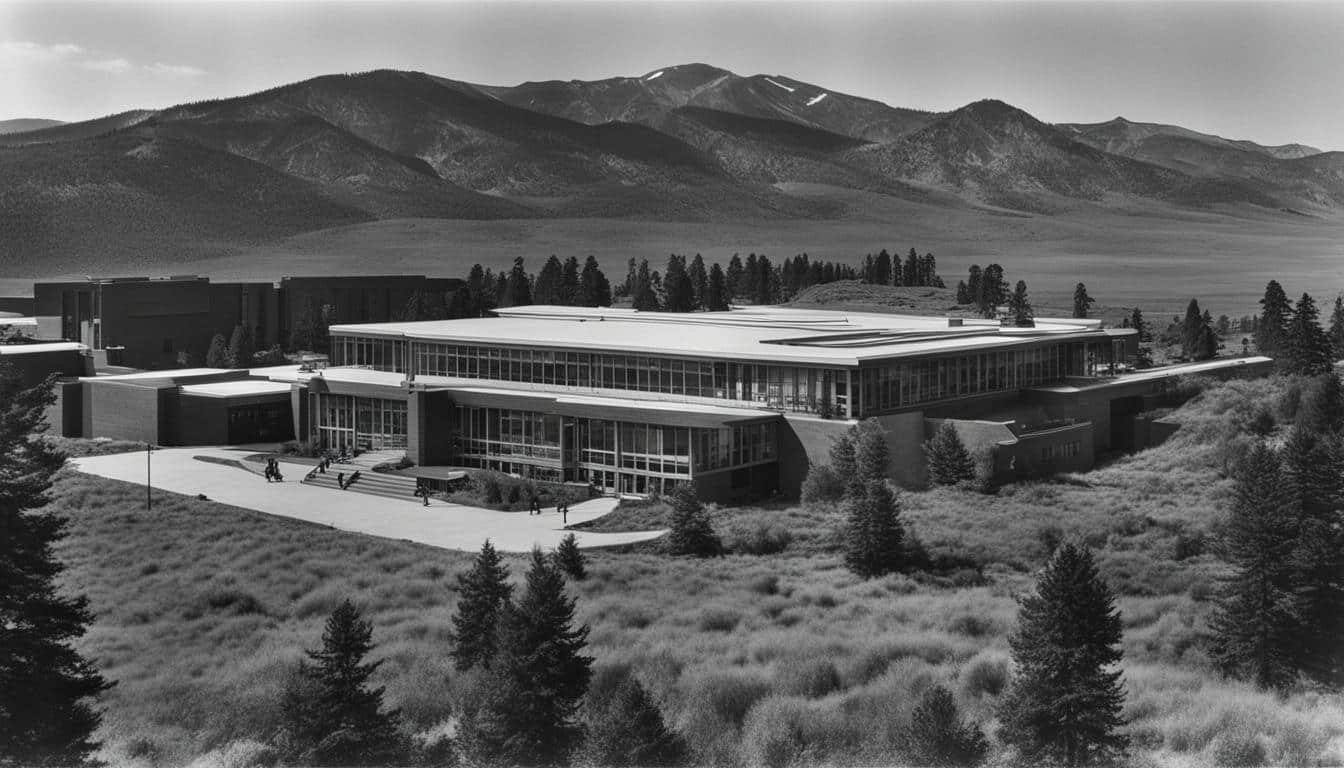The University of Utah Medical School is renowned for its prestigious MD program and its commitment to producing exceptional physicians. If you are considering pursuing a career in medicine, understanding the admissions process and requirements at the University of Utah Medical School is essential to your success.
The Office of Admissions at the Spencer Fox Eccles School of Medicine is responsible for processing and reviewing all MD applications. The admissions team evaluates each applicant holistically, considering academic achievements, extracurricular activities, community service, and leadership experiences. Their mission is to admit well-qualified and prepared medical students who exemplify dedication, service, leadership, research skills, and academic excellence.
The University of Utah Medical School is dedicated to ensuring accessibility and convenience for applicants. To accommodate changing safety regulations and financial considerations, the school now offers virtual interviews for the 2023-2024 application cycle. This provides applicants with an opportunity to showcase their passion and potential from the comfort of their own homes.
Key Takeaways:
- The University of Utah Medical School focuses on holistic admissions, considering various aspects of applicants’ profiles such as academic achievements, extracurricular activities, community service, and leadership experiences.
- Virtual interviews are now available for the 2023-2024 application cycle, offering convenience and flexibility to applicants.
- The Office of Admissions is committed to admitting well-qualified and dedicated medical students who demonstrate a passion for service, leadership, research, and academic excellence.
- The University of Utah Medical School provides a comprehensive MD program that prepares students to become skilled and compassionate physicians.
- Applicants should carefully review the admissions requirements and ensure they meet the minimum MCAT and GPA criteria before submitting their application.
Admissions Requirements for University of Utah Medical School
Applicants to the University of Utah Medical School must meet certain requirements to be considered for admission into the program. Meeting the minimum criteria is essential for eligibility to submit a secondary application.
The school employs a matrix model that evaluates applicants based on their MCAT scores and undergraduate GPA. This holistic approach ensures a comprehensive evaluation of each applicant’s academic potential and readiness for medical school.
Here are the key requirements for admission to the University of Utah Medical School:
- MCAT Scores: Applicants must attain a minimum MCAT score to be considered for admission.
- GPA: An undergraduate GPA is required for eligibility. The specific GPA requirements may vary, depending on the range of MCAT scores.
- Bachelor’s Degree: Applicants must hold a bachelor’s degree from a regionally accredited institution.
- Undergraduate Major: There is no specific recommended undergraduate major for admission into the medical school.
It is important to note that meeting the minimum requirements does not guarantee admission, as the school takes a holistic approach to evaluate applicants. The Admissions Committee also considers factors such as extracurricular activities, community service, leadership experiences, and research skills when making admission decisions.
“We believe that a diverse student body enriches the learning environment and fosters innovation in healthcare. As such, meeting the minimum requirements is just the first step in the admissions process. We value well-rounded applicants who demonstrate not only academic excellence but also a passion for service, leadership, and research.” – Dr. Jane Stevens, Director of Admissions
Application Process for University of Utah Medical School

Applying to the MD program at the University of Utah Medical School involves a multi-step process. Here’s a breakdown of the application timeline and requirements:
1. Submitting the Primary Application
To begin the application process, aspiring medical students must submit the primary application through the American Medical College Application Service (AMCAS) between May 1 and October 1. This application includes personal information, academic history, work experience, and your MCAT scores.
2. Meeting Minimum Requirements
Once the primary application is received, applicants who meet the minimum requirements will be invited to complete the secondary application. Meeting the minimum requirements entails having a competitive GPA and MCAT score.
3. Completing the Secondary Application
The secondary application is an essential step in the admissions process for the MD program. It includes additional materials that help the admissions committee evaluate applicants holistically. These materials may include:
- Letters of Recommendation: The University of Utah Medical School requires three letters of recommendation from individuals who can speak to your character, work ethic, and suitability for a career in medicine. One additional letter of recommendation is optional.
- Essays: Applicants must submit various essays as part of the secondary application. These essays may include the MSTP essay (for those interested in the Medical Scientist Training Program), a significant research essay, and an essay for reapplying applicants.
4. Interview Process
After reviewing the secondary application materials, the University of Utah Medical School may invite selected applicants for an interview. Interviews are typically conducted virtually, accommodating changing safety regulations and offering convenience for applicants.
“The interview day at the University of Utah Medical School was a wonderful experience. The faculty and staff were extremely welcoming, and the interview itself was conversational and engaging. It gave me a chance to showcase my personality and why I was passionate about pursuing medicine.” – John Smith, Current Medical Student
Following the interviews, the admissions committee evaluates each applicant based on their academic achievements, personal qualities, interpersonal skills, and potential as a future physician.
5. Notification of Acceptance
After careful consideration, the University of Utah Medical School will notify applicants of their admission status. Successful candidates will receive an acceptance offer, while others may be placed on a waiting list or receive a rejection.
| Application Process | Timeline |
|---|---|
| Primary Application Submission | May 1 – October 1 |
| Secondary Application Completion | Upon meeting minimum requirements |
| Interviews | Invitations sent after secondary application review |
| Notification of Acceptance | Varies depending on the application cycle |
Curriculum at University of Utah Medical School
The curriculum at the University of Utah Medical School is designed to provide a people-first approach, emphasizing community, relationships, and collaboration. It is a well-rounded program that combines classroom education with hands-on clinical experience, ensuring that students develop both the theoretical and practical skills required to excel in their medical careers.
Throughout the four years of medical school, students are exposed to a wide range of medical disciplines, preparing them for the diverse challenges they will encounter in their future practice. The curriculum covers fundamental science courses, clinical rotations, and specialized electives, enabling students to explore their individual interests and areas of expertise.
A notable feature of the curriculum is the opportunity for students to participate in student-led clinics. These clinics, run by medical students under the supervision of experienced faculty, provide invaluable practical experience and a chance to make a positive impact on underserved populations. Through these clinics, students gain firsthand experience in providing quality care, developing their clinical skills, and understanding the unique healthcare needs of different communities.
The University of Utah Medical School believes that engagement with real patients is an essential component of medical education. The emphasis on practical experience prepares students to handle complex clinical scenarios and develop the interpersonal skills necessary to establish meaningful connections with their patients.
The school’s curriculum also integrates experiential learning, research opportunities, and interprofessional education, fostering a collaborative mindset among students and preparing them to work effectively within healthcare teams. The aim is to develop physicians who are not only knowledgeable in their field but also compassionate, ethical, and capable of delivering patient-centered care.
“The curriculum at the University of Utah Medical School strikes a balance between academic rigor and practical experience, ensuring that students are well-prepared for the challenges of modern healthcare.”
Sample Course Offerings:
| Year | Course |
|---|---|
| First Year | Introduction to Clinical Medicine |
| Human Anatomy | |
| Medical Physiology | |
| Second Year | Pathophysiology and Therapeutics |
| Pharmacology | |
| Introduction to Medical Genetics | |
| Third Year | Internal Medicine Clerkship |
| Surgery Clerkship | |
| Pediatrics Clerkship | |
| Fourth Year | Electives |
| Advanced Clinical Skills | |
| Research Opportunities |
The University of Utah Medical School’s comprehensive curriculum reflects its commitment to producing competent and compassionate physicians who are equipped to meet the evolving healthcare needs of society. By providing a solid foundation of knowledge and skills combined with opportunities for hands-on experience, the curriculum prepares students for a successful medical career.
Unique Opportunities at University of Utah Medical School

The University of Utah Medical School offers a range of unique programs and opportunities that enrich the educational experience of its students. These programs provide specialized knowledge and skills that can enhance their medical education and future careers.
Two-Year Medical School Program
One of the unique offerings at the University of Utah Medical School is the option for a two-year medical school program. This accelerated program allows students to complete their medical education in a shorter timeframe, providing an efficient pathway to becoming a physician. Students in this program will undergo an intensive curriculum designed to cover all the necessary medical knowledge and clinical skills while maintaining the same high standard of education.
Wilderness Medicine Program
The University of Utah is renowned for its wilderness medicine program, which prepares students to provide medical care in remote and challenging environments. This program combines classroom-based instruction with hands-on field experiences, equipping students with the skills to address medical emergencies in wilderness settings such as mountains, deserts, and forests. Graduates of this program have the knowledge and confidence to handle unique healthcare situations that may arise in outdoor and adventure settings.
Department of Biomedical Informatics
The University of Utah Medical School is home to a distinguished and forward-thinking Department of Biomedical Informatics. This department focuses on the intersection of healthcare, technology, and data science. Students in this program learn to utilize cutting-edge informatics tools and methods to improve patient care, enhance clinical decision-making, and advance medical research. The program offers a wide range of research opportunities and exposes students to emerging areas such as artificial intelligence and machine learning in healthcare.
| Program | Description |
|---|---|
| Two-Year Medical School Program | An accelerated program for students to complete their medical education in a shorter timeframe. |
| Wilderness Medicine Program | Prepares students to provide medical care in remote and challenging environments. |
| Department of Biomedical Informatics | Focused on the intersection of healthcare, technology, and data science. |
Financial Considerations for University of Utah Medical School
Attending medical school can be a significant financial investment, but at the University of Utah Medical School, students are provided with comprehensive financial support to alleviate some of the burden. The school understands the importance of enabling aspiring doctors to focus on their education and training without financial constraints. Here’s what students can expect in terms of financial considerations at the University of Utah Medical School:
Tuition Coverage and Fellowship
Students at the University of Utah Medical School receive full tuition coverage for each year of the program. This means that the cost of tuition is completely taken care of, allowing students to pursue their medical education without worrying about accumulating student loan debt. In addition to tuition coverage, students also receive a fellowship, or stipend, for each academic year. For the 2023-2024 academic year, the fellowship amount is $35,000, providing students with financial support to cover living expenses and other necessary costs.
Health, Dental, and Vision Insurance
Recognizing the importance of healthcare coverage for students, the University of Utah Medical School extends health, dental, and vision insurance benefits to all enrolled students. This ensures that students have access to quality healthcare services and can maintain their overall well-being throughout their medical education.
Scholarship Opportunities
While full tuition coverage and a fellowship are provided to all students, the University of Utah Medical School also offers scholarship opportunities. These scholarships are awarded based on various criteria such as academic achievement, leadership abilities, and financial need. Scholarships can further alleviate the financial burden and may provide additional financial support to deserving students.
Funding for Medical Meetings
As part of its commitment to helping students excel both academically and professionally, the University of Utah Medical School provides funding for students to attend medical meetings and conferences. This gives students valuable opportunities to expand their knowledge, network with professionals in their field, and stay updated on the latest developments in medicine.
Overall, the University of Utah Medical School understands the financial challenges that can arise during the pursuit of a medical education. By offering full tuition coverage, a fellowship, insurance benefits, scholarship opportunities, and funding for medical meetings, the school aims to ensure that students can focus on their studies and professional growth without worrying about the financial aspects of their education.
Notable Alumni from University of Utah Medical School
The University of Utah Medical School has produced outstanding alumni who have made noteworthy contributions to the field of medicine. These notable alumni serve as a testament to the quality of education and training offered by the school, as well as the impact they have had on the medical community.
“Dr. Robert Jarvik, an alumnus of the University of Utah Medical School, is recognized for performing the first artificial heart implant. His groundbreaking work revolutionized the field of cardiovascular medicine and paved the way for future advancements in cardiac surgery.”
“Another notable alumnus, Dr. William DeVries, is a pioneer in the field of cardiothoracic surgery. He achieved worldwide recognition for successfully implanting the Jarvik-7 artificial heart in patient Barney Clark, marking a significant milestone in the history of cardiac transplantation.”
These exceptional alumni exemplify the caliber of individuals who graduate from the University of Utah Medical School. Their contributions have had a lasting impact on patient care, medical research, and the advancement of healthcare practices.
| Notable Alumni | Contributions |
|---|---|
| Dr. Robert Jarvik | Performed the first artificial heart implant |
| Dr. William DeVries | Pioneer in cardiothoracic surgery and artificial heart transplantation |
| Dr. Ruby Hirose | Trailblazer in medical research and advocate for women in medicine |
| Dr. Mary Becker | Renowned oncologist and leader in cancer treatment |
Research Opportunities at University of Utah Medical School
The University of Utah Medical School provides students with valuable research opportunities, fostering a culture of innovation and scientific exploration. Students have access to extensive resources, funding, and collaborations that enable them to contribute to advancements in medical knowledge and practice.
Research Funding
At the University of Utah Medical School, students have the opportunity to pursue research projects with the support of dedicated research funding. Through grants and scholarships, the school encourages students to explore their research interests and make meaningful contributions to their respective fields. This funding not only covers project expenses but also provides students with valuable financial support during their research endeavors.
Department of Biomedical Informatics
The Department of Biomedical Informatics at the University of Utah Medical School plays a pivotal role in fostering research opportunities and collaborations. With a focus on leveraging technology and data analytics in healthcare, the department enables students to engage in cutting-edge research projects that have the potential to impact patient care and improve healthcare outcomes. The department’s interdisciplinary approach ensures that students gain valuable insights into the intersection of medicine, technology, and data science.
“Research is the foundation of scientific progress, and at the University of Utah Medical School, we are committed to providing students with the resources and support they need to conduct meaningful research that can drive innovation in healthcare.”
The University of Utah Medical School is actively involved in research collaborations with various institutions and organizations, providing students with access to diverse research networks. These collaborations broaden the scope of research opportunities and expose students to different perspectives and approaches within the field of medicine.
By engaging in research projects, students not only expand their knowledge and critical thinking skills but also develop a deeper understanding of the scientific method and evidence-based medicine. These experiences prepare them for future careers as physician-scientists or contribute to their overall medical education, enriching their understanding of the complex healthcare landscape.
Campus Facilities and Resources at University of Utah Medical School
The University of Utah Medical School is located within a robust health system that includes a state-of-the-art medical center and a network of diverse clinical settings. These facilities provide students with valuable practical experiences and access to cutting-edge resources that support their education and training.
At the heart of the University of Utah’s health system is the renowned University of Utah Health, an academic medical center dedicated to delivering exceptional patient care, advancing medical research, and educating future healthcare professionals. The medical center offers a comprehensive range of specialized services, including primary and specialty care, advanced diagnostics, surgical procedures, and innovative treatments.
Students at the University of Utah Medical School benefit from the following campus facilities and resources:
- Simulation Center: The Simulation Center provides students with realistic clinical scenarios in a controlled environment. Through simulated activities, students develop essential clinical skills and gain confidence in patient care.
- Medical Library: The expansive medical library at the University of Utah offers a vast collection of resources, including textbooks, journals, online databases, and research materials. Students can access these resources to support their coursework, research projects, and evidence-based practice.
- Research Laboratories: The medical school houses state-of-the-art research laboratories equipped with advanced technologies and equipment. Students have opportunities to engage in groundbreaking research projects, collaborate with esteemed faculty, and contribute to scientific advancements in various fields of medicine.
- Clinical Training Sites: Students have access to a wide range of clinical training sites, including renowned hospitals, community health centers, and specialty clinics. These settings allow students to gain hands-on experience working with diverse patient populations under the guidance of experienced healthcare professionals.
- Interprofessional Education: The University of Utah Medical School recognizes the importance of collaboration among healthcare professionals. The campus provides ample opportunities for interprofessional education, allowing students from different healthcare disciplines to learn together, exchange knowledge, and enhance their teamwork skills.
The University of Utah Medical School is committed to creating a comprehensive learning environment that prepares students for successful careers in medicine. The robust facilities and resources available on campus ensure that students receive a well-rounded education and are equipped with the skills and knowledge necessary to provide exceptional patient care.
Conclusion
The University of Utah School of Medicine is committed to providing a comprehensive medical education program that prepares students to become skilled and compassionate physicians. Through a curriculum that emphasizes community, collaboration, and excellence, students at the University of Utah Medical School are given unique opportunities to enhance their learning experience and develop into outstanding healthcare professionals.
With a strong focus on hands-on clinical experience and student-led clinics, the medical education at the University of Utah School of Medicine goes beyond the classroom and equips students with practical skills and the ability to provide quality care to underserved populations. The school also offers unique programs such as wilderness medicine and a department of biomedical informatics, which further enrich the educational experience and contribute to the advancement of medical knowledge.
Graduates from the University of Utah Medical School go on to make significant contributions to the field of medicine, positively impacting the health of communities. The school’s commitment to academic excellence, research opportunities, and specialized programs prepares students for successful careers and positions them as leaders in the medical community. For those seeking a comprehensive and rewarding medical education, the University of Utah School of Medicine is an excellent choice.
Also Refer : American University Law School Admissions & Programs
FAQs
Q: What is the Spencer Fox Eccles School of Medicine at the University of Utah?
A: The Spencer Fox Eccles School of Medicine at the University of Utah, also known as SFESOM or UUSOM, is the medical school of the University of Utah, located in Salt Lake City, Utah.
Q: What are the admissions requirements for the University of Utah Medical School?
A: Admissions requirements for the University of Utah Medical School include completion of pre-medical coursework, MCAT scores, letters of recommendation, and a personal statement.
Q: How can I apply to the University of Utah Medical School?
A: To apply to the University of Utah Medical School, prospective students need to submit an application through the American Medical College Application Service (AMCAS) and complete the University of Utah Secondary Application.
Q: What are the areas of focus for education at the Spencer Fox Eccles School of Medicine?
A: The Spencer Fox Eccles School of Medicine emphasizes education in primary care, anesthesiology, occupational pulmonary medicine, and providing care in rural and underserved communities.
Q: Can you provide an overview of the curriculum at the University of Utah Medical School?
A: The curriculum at the University of Utah Medical School includes a focus on health science education, clinical experiences, and opportunities for research, culminating in the MD degree.
Q: What sets the University of Utah Medical School apart from other medical schools in the state?
A: The University of Utah Medical School stands out for its focus on primary care, groundbreaking research, and its commitment to serving the community, particularly in rural and underserved areas.
Q: How does the University of Utah Medical School contribute to the healthcare industry?
A: The University of Utah Medical School plays a significant role in healthcare through its training of medical professionals, cutting-edge research at its medical center, and its impact on improving healthcare in the region and beyond.
Q: What opportunities are available for students at the University of Utah Medical School?
A: Students at the University of Utah Medical School have access to clinical rotations, research opportunities, interactions with renowned faculty, and connections to national institutes of health, all contributing to a well-rounded medical education.
Q: When was the Southern Utah campus of the University of Utah Medical School established?
A: The Southern Utah campus of the University of Utah Medical School was established in 2022, with a focus on addressing the healthcare needs of Southern Utah and expanding educational opportunities in the region u of u health.
Q: What are the future plans for the University of Utah Medical School?
A: The University of Utah Medical School has plans to further expand its impact by developing a new campus, fostering collaborations, and continuing to advance medical education and research in the state and the nation.




